An edible adventure through Spain’s most deliciously underrated corner.
Galicia isn’t trying to impress you—and that’s exactly why it does. Tucked into Spain’s misty northwest, this region feels like the country’s best-kept culinary secret: green hills that could pass for Ireland, stone villages that haven’t changed in centuries, and food so fresh it often comes with a splash from the sea it just left behind.
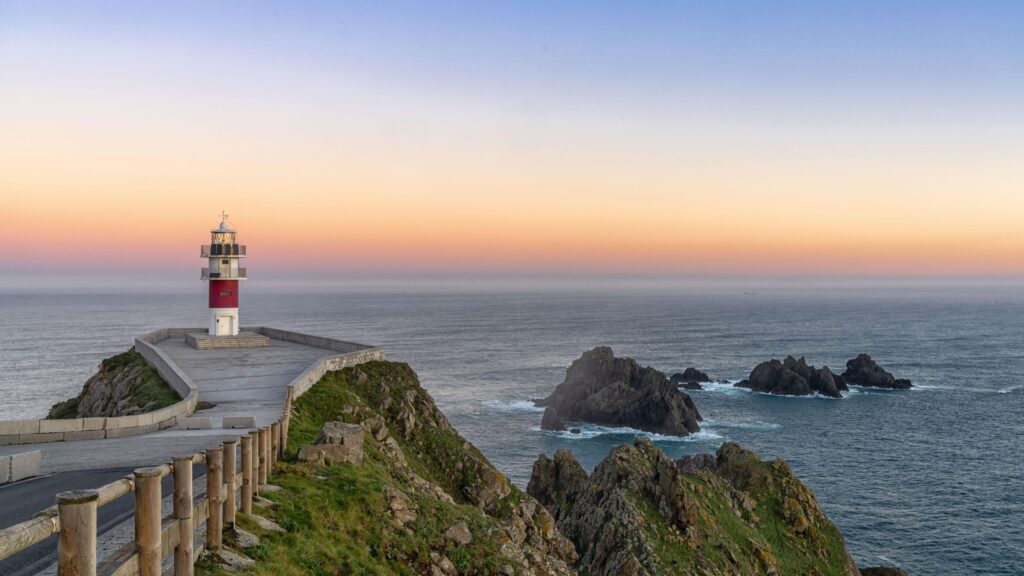
This isn’t where you come for flashy tapas or Instagrammable paella. This is where you come to tear into hot octopus with a toothpick in a tiny bar filled with old men watching fútbol. It’s where fishermen risk their lives for percebes (goose barnacles) on wave-battered rocks. It’s where wine is sipped from ceramic bowls, bread is crusty enough to fight back, and grandmas still make empanadas using recipes older than most of the buildings in your hometown.
Galician cuisine is honest. It’s hearty. It doesn’t need a fancy garnish or a TikTok trend to stand out. It relies on ingredients pulled straight from the Atlantic or dug from lush inland farms. The magic comes from simplicity: sea salt, paprika, olive oil, and a whole lot of tradition.
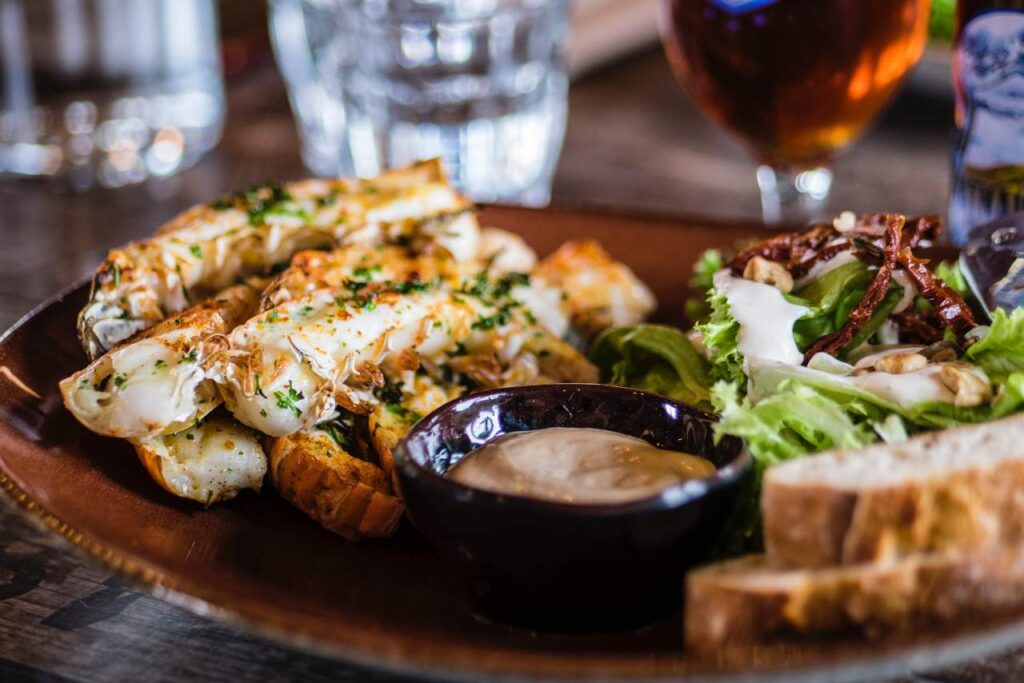
But don’t let the rustic vibe fool you—there’s also creativity bubbling under the surface. Young chefs are taking centuries-old dishes and giving them modern twists, while still honoring the soul of Galician cooking. Whether you’re slurping broth in a stone tavern or sipping Albariño in a sleek vineyard tasting room, the throughline is always flavor, hospitality, and history.
So if you’re the kind of traveler who eats first and asks questions later, you’re in the right place.
We’ve rounded up 10 of the absolute must-have food experiences in Galicia—from the obvious (yes, there will be pulpo) to the deeply local (say hello to porky greens and almond cake stamped with a saint’s cross). And in true Cerca style, we’re not just telling you what to eat—we’re pointing you to the exact spots to eat it like a local.
Ready to get deliciously lost in Galicia? Let’s go.
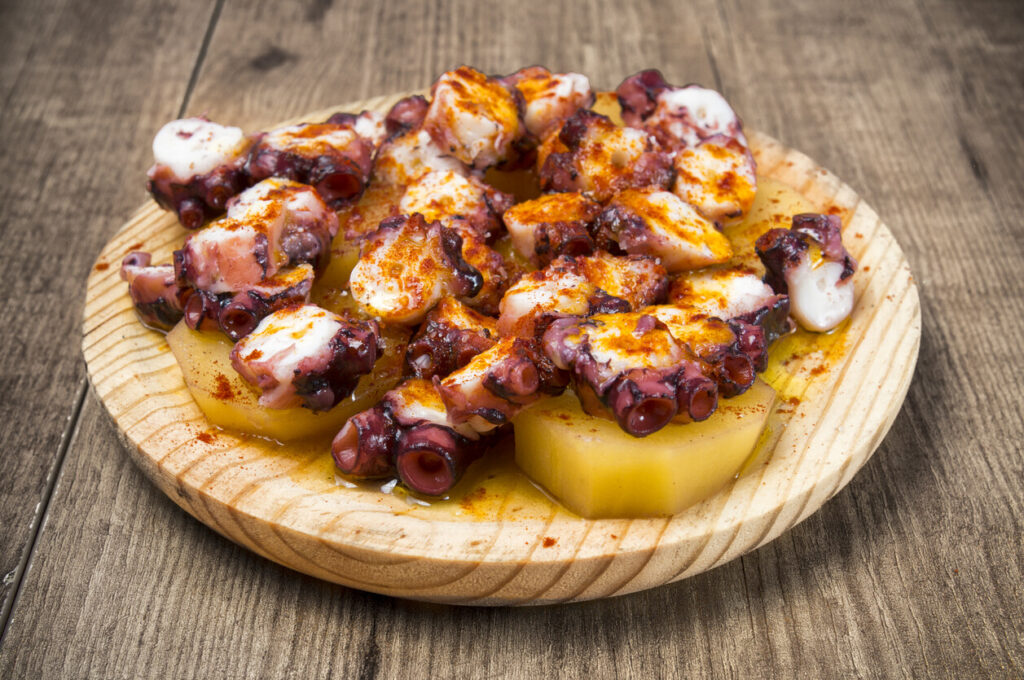
1. Pulpo a Feira in Melide
What it is: Tender octopus boiled in copper cauldrons, sliced and sprinkled with olive oil, paprika, and salt. Served on wooden plates with toothpicks.
The story: Galicia’s most iconic dish has roots in inland villages where octopus was historically dried and transported from the coast. It became a staple at fairs (feiras), where vendors served it simply and quickly to crowds. The simplicity is the magic: soft octopus, smoky paprika, crunchy salt.
Where to eat it: Pulpería Ezequiel in Melide, a pilgrimage-town favorite on the Camino de Santiago. Generations of walkers have made this their octopus pit stop.
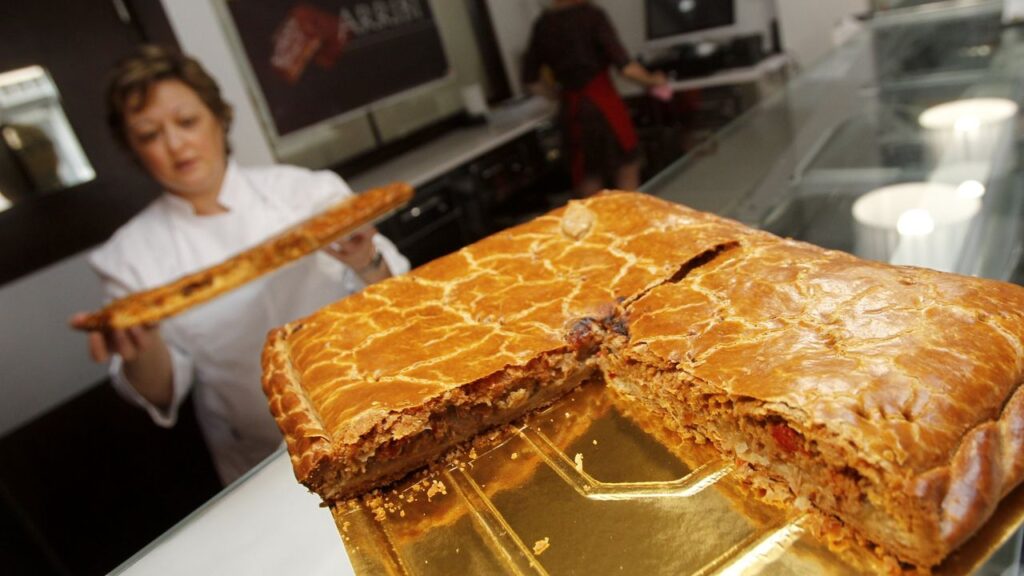
2. Empanada Gallega in A Coruña
What it is: A large, savory pie made with flaky pastry dough and stuffed with fillings like tuna, cod, pork, or even scallops.
The story: Empanadas in Galicia go back to medieval times—sailors and farmers needed a portable, hearty meal. The dough is traditionally made with oil from the sofrito (sautéed onions and peppers) used in the filling. It’s comfort food, picnic food, and party food all at once.
Where to eat it: Casa Poy in Lugo for the classic version. Or head to Panadería O Forno de Lugo in A Coruña, where some of the best are made fresh every morning.
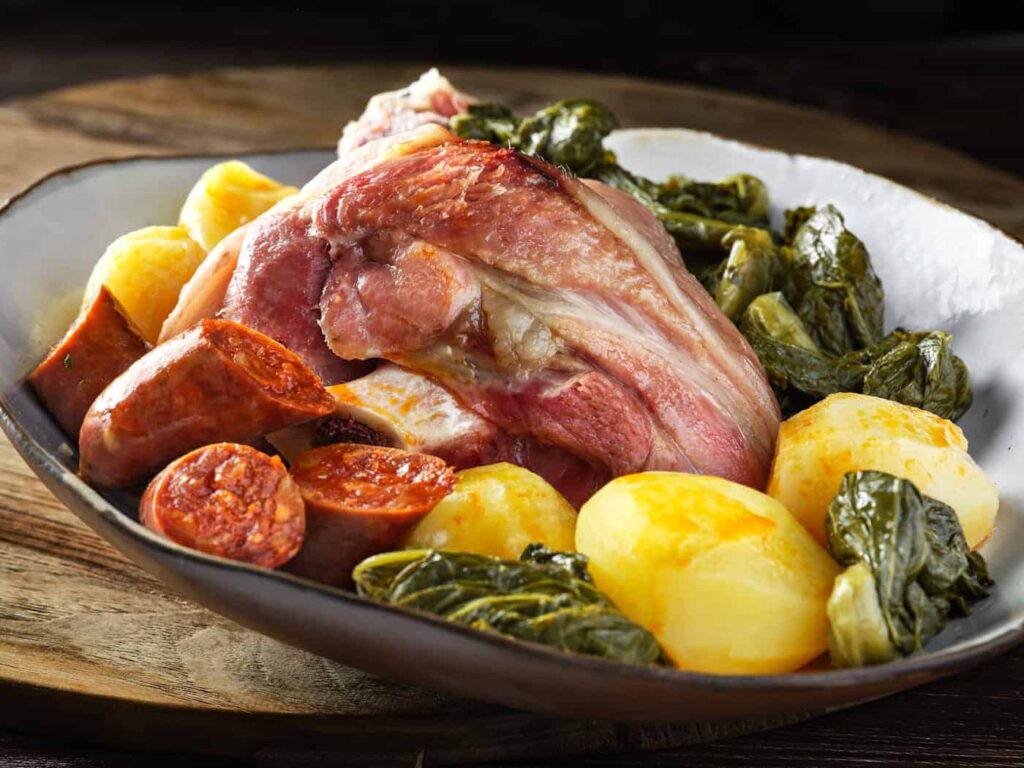
3. Lacón con Grelos in Lugo
What it is: Salt-cured pork shoulder boiled and served with turnip greens (grelos), chorizo, and potatoes.
The story: Traditionally eaten in winter, especially around Carnival (Entroido), this dish brings together the soul of Galician farming life. Grelos are slightly bitter greens that balance the richness of the pork. It’s hearty, smoky, and made for cold, rainy days.
Where to eat it: Mesón A Lareira in Lugo serves a time-honored version in a cozy, wood-paneled dining room. Pro tip: go in February during Entroido to experience it with locals.
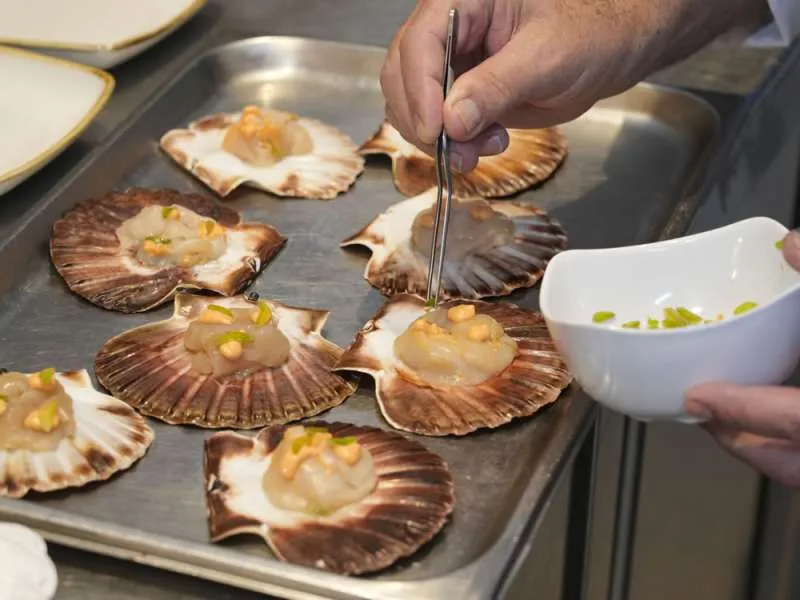
4. Zamburiñas a la Plancha near Pontevedra
What it is: Small, sweet Galician scallops grilled on the shell with breadcrumbs, garlic, olive oil, and parsley.
The story: Unlike larger scallops (vieiras), zamburiñas are native to Galicia’s estuaries and highly prized for their delicate flavor. They’re often mistaken for baby scallops, but they’re a species of their own.
Where to eat it: Casa Solla near Pontevedra—a Michelin-starred restaurant where chef Pepe Solla gives this classic dish a delicate modern twist.
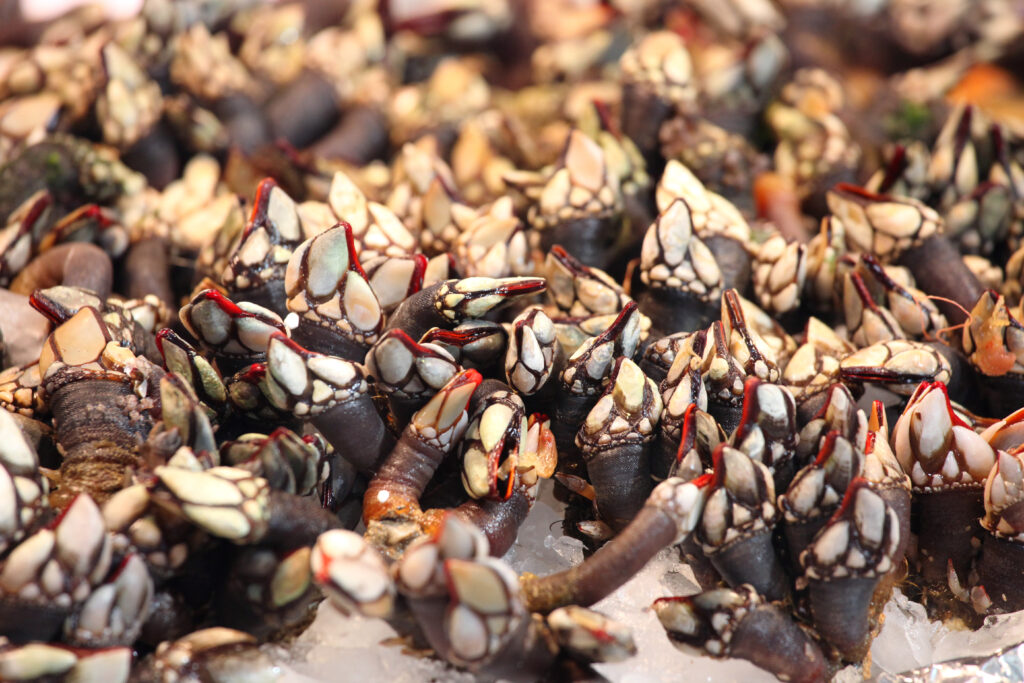
5. Percebes (Goose Barnacles) in O Grove
What it is: Strange, leathery-looking crustaceans that grow on wave-battered rocks. Served boiled and eaten with your hands.
The story: Harvesting percebes is one of the most dangerous jobs in Europe. Called “percebeiros,” the collectors risk their lives for these delicacies. Their taste is pure Atlantic: salty, briny, intense.
Where to eat it:D’Berto in O Grove is a legendary seafood restaurant where percebes are served in their full, unadorned glory.
6. Caldo Gallego in Santiago de Compostela
What it is: A thick, warming soup of white beans, potatoes, chorizo, and turnip greens.
The story: This rustic soup is Galicia in a bowl. It’s said that in every village, each house has its own variation. It’s traditionally eaten in winter, but locals will argue that there’s no bad time for caldo.
Where to eat it:
🥣 O Dezaseis in Santiago de Compostela is a beloved tavern where caldo gallego is served with bread and house wine—and plenty of warmth.
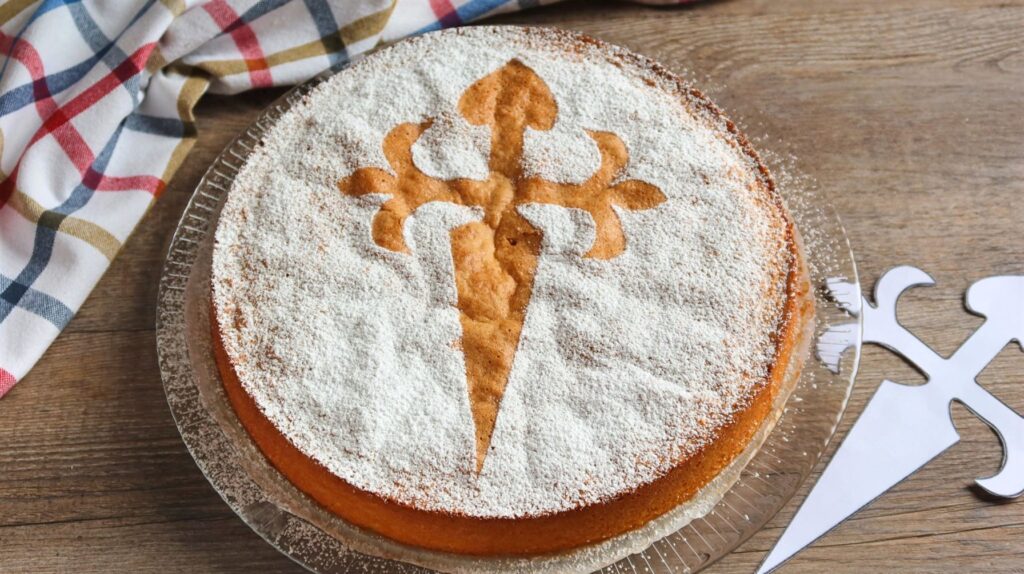
7. Tarta de Santiago in the Old Town of Santiago de Compostela
What it is: A moist almond cake dusted with powdered sugar and marked with the cross of Saint James.
The story: Named for Galicia’s patron saint, this cake was first recorded in the 16th century but became a symbol of the Camino pilgrimage in the 20th century. It’s gluten-free (made without flour) and best enjoyed after a long walk—or with a coffee.
Where to eat it: Pastelería Mercedes Mora in Santiago’s old town is a local favorite. Ask for the handmade, not pre-packaged, version.
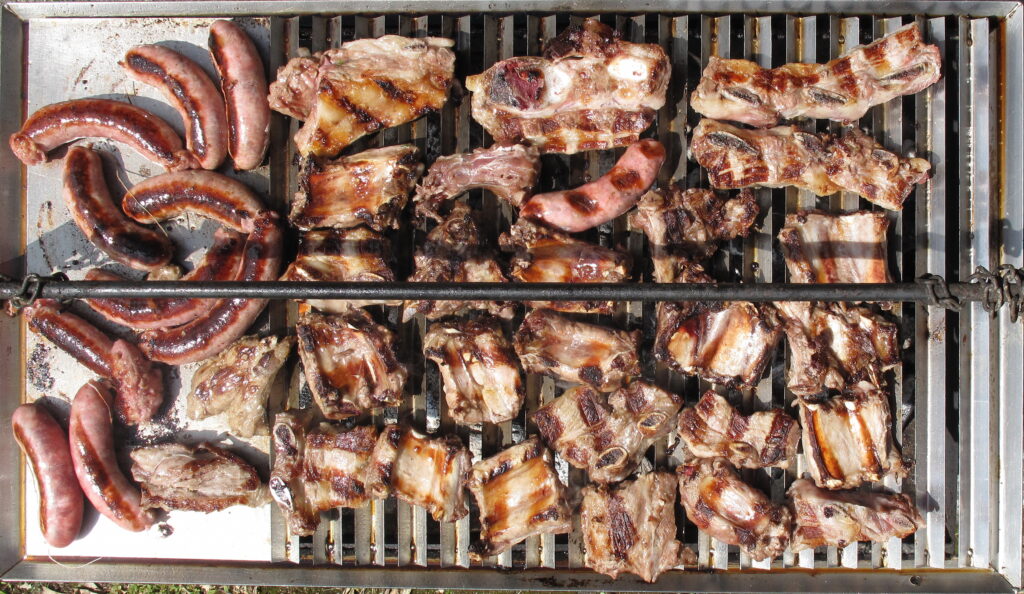
8. Churrasco Gallego in the Rías Baixas
What it is: Grilled pork or beef ribs marinated in garlic, olive oil, and herbs. Served with fries and chimichurri-like sauces.
The story: Galicia may be known for seafood, but locals LOVE their churrasco. It’s a summer BBQ staple, especially in rural towns during fiestas. The meat is marinated for hours and grilled slowly over wood or charcoal.
Where to eat it: A Casa do Tella e Rosa in Sanxenxo, a seaside town in the Rías Baixas, is beloved for its backyard-style BBQ vibes.
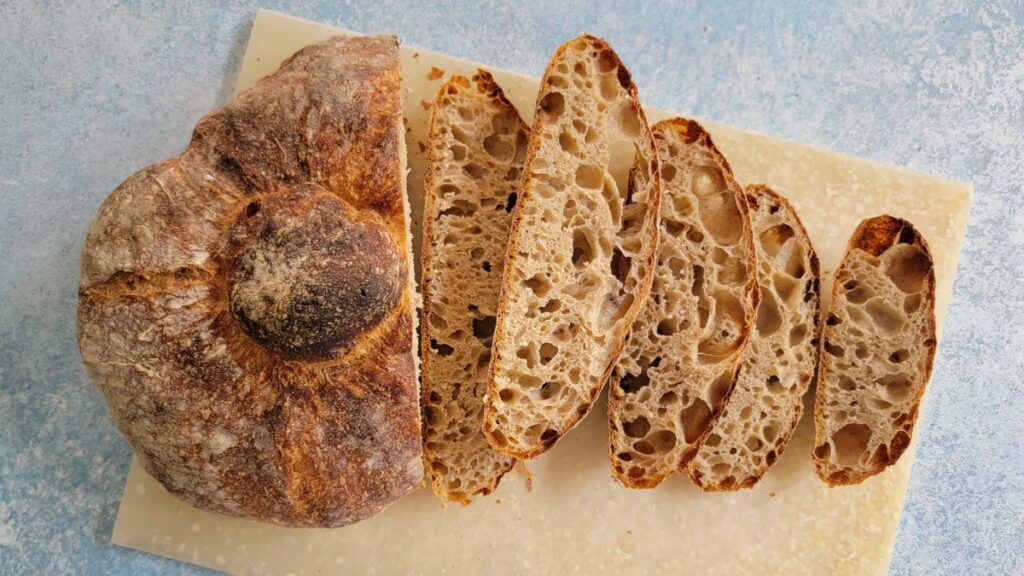
9. Pan Gallego from Ourense
What it is: Round, crusty, chewy bread with a sourdough-like tang.
The story: Galician bread has Protected Geographical Indication (PGI) status and a deep crust that forms in wood-fired ovens. It’s made with trigo do país (local wheat) and has a wild fermentation that makes every loaf slightly different.
Where to eat it: Forno do Tomás in Ourense is a legendary bakery where the loaves are still made by hand—and often sell out by noon.

10. Albariño in Cambados
What it is: A crisp, citrusy white wine with floral notes and minerality.
The story: Albariño is Galicia’s signature wine, grown primarily in the Rías Baixas. The region’s foggy, salty climate makes it perfect for wine that pairs with seafood. The grape is ancient, and winemaking here goes back to Roman times.
Where to drink it: Visit Cambados, the capital of Albariño, and tour Bodegas Martín Códax or the smaller Pazo de Señorans for tastings with Atlantic views.
Final Thoughts: Why Galicia Is Spain’s Best Kept Culinary Secret
Galician food isn’t trendy—it’s timeless. It’s about terroir, tradition, and generosity. You won’t just eat in Galicia; you’ll connect. With fishermen, farmers, bakers, winemakers. With grandmas who still make empanadas by hand and chefs who turn wild seafood into poetry.
So go north. Eat slowly. Listen to the waves. And leave space in your suitcase—for bread, cheese, and memories.